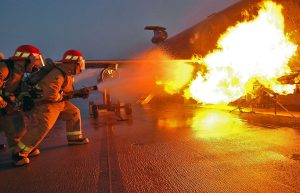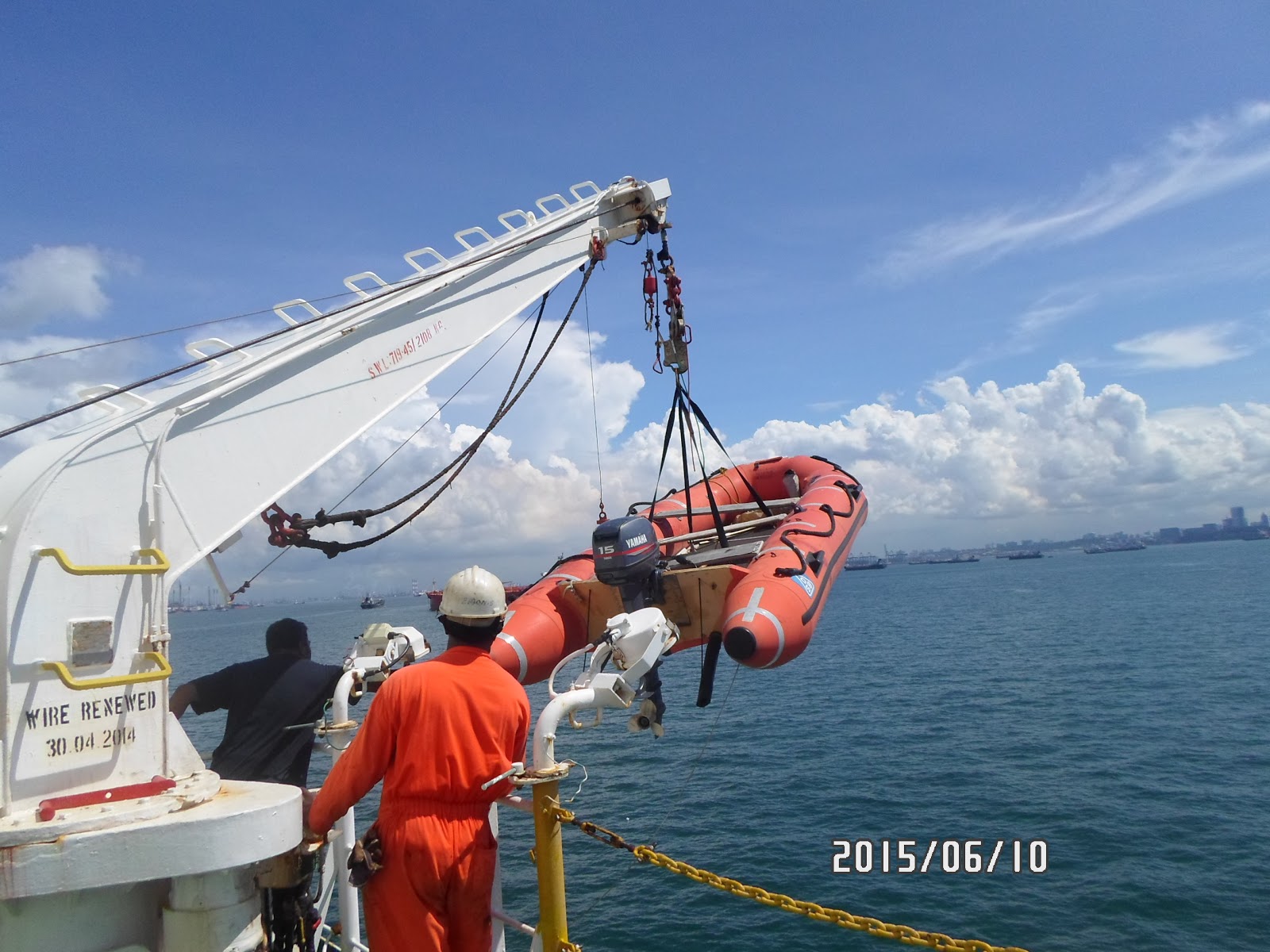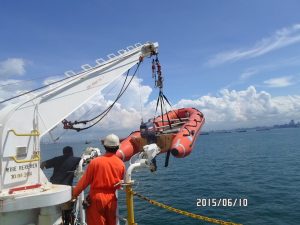For navigation ship officers, safety and emergency preparedness are paramount to ensuring the well-being of the crew, the ship, and its cargo. The unpredictable nature of the sea means that officers must be ready to respond swiftly and effectively to a range of emergency situations, from fires and man-overboard incidents to collisions and abandon ship scenarios. At maritime academies and universities, cadets are trained extensively in Safety and Emergency Procedures, equipping them with the knowledge and skills needed to manage crises at sea and minimize risks. Here, we explore the key aspects of safety and emergency procedures, including firefighting, life-saving techniques, search and rescue operations, and emergency planning, all of which are integral to the role of a navigation ship officer.
Firefighting Techniques at Sea
Fires on ships are one of the most dangerous emergencies that can occur, as they threaten the safety of everyone on board and can cause severe damage to the vessel. A fire at sea, far from immediate help, requires prompt action from the crew to prevent it from spreading and becoming uncontrollable.
- Types of Fires and Extinguishing Methods
Officers are trained to understand the different types of fires, classified by the materials involved (Class A for solids like wood or cloth, Class B for flammable liquids, Class C for gases, and Class D for metals). Different types of fires require specific extinguishing methods, such as using water for Class A fires or dry powder for Class D fires.Officers must know how to use firefighting equipment on board, such as fire extinguishers, hoses, and fire blankets, as well as more advanced systems like CO₂ flooding systems, which are used to suppress fires in engine rooms or cargo holds.
- Firefighting Teams and Protocols
On large vessels, firefighting is often a team effort. Officers are trained to lead or participate in fire teams, with clearly defined roles such as hose handlers, nozzle operators, and backup personnel. Regular fire drills ensure that everyone on board knows their responsibilities and can respond quickly and efficiently during a real emergency.Protocols such as closing fire doors, ventilating the ship to control smoke, and isolating fuel sources are crucial in preventing a fire from spreading throughout the vessel.

Life-Saving Techniques and Equipment
In the event of an emergency that requires abandoning ship, officers must ensure that the crew can evacuate safely and that life-saving equipment is properly deployed and used.
- Life Rafts and Lifeboats
Every vessel is equipped with life rafts and lifeboats, which provide a safe means of escape if abandoning the ship becomes necessary. Officers are responsible for ensuring that all life-saving equipment is regularly inspected, properly maintained, and easily accessible. Lifeboat drills are conducted frequently to familiarize the crew with evacuation procedures, such as launching the lifeboat, starting its engine, and using onboard equipment like flares, radios, and food rations.In addition to physical evacuation, officers must also be trained in survival at sea, which includes using thermal protective aids, managing rations and water, and maintaining morale while awaiting rescue.
- Life Jackets and Immersion Suits
Each crew member must have access to a life jacket and an immersion suit designed to protect against hypothermia in cold water. Officers ensure that these items are correctly stored, and during drills, crew members practice donning life jackets and immersion suits quickly and efficiently.
Search and Rescue Operations
Search and rescue (SAR) operations are essential when crew members fall overboard or if the ship encounters another vessel in distress. Officers must be well-versed in coordinating SAR efforts and using the ship’s equipment to locate and rescue individuals at sea.
- Man Overboard Procedures
When a crew member falls overboard, time is of the essence. Officers are trained in man-overboard maneuvers, such as the Williamson turn, which brings the ship back along its original track to retrieve the person in the water. The crew must immediately deploy a lifebuoy and maintain visual contact with the individual while the ship turns.Once the ship is in position, officers coordinate the rescue, using recovery equipment such as lifeboats, rescue nets, or davit-launched rescue systems. Communication is critical during these operations, as officers need to maintain clear contact with the bridge and other crew members to ensure the person is recovered safely.
- Rescue of Other Vessels
If a nearby vessel sends out a distress call, officers must be able to assist in search and rescue operations. This may involve using the ship’s radar, Automatic Identification System (AIS), and radio equipment to locate the distressed vessel and provide aid. Officers are also responsible for coordinating with shore-based SAR authorities to ensure a successful rescue mission.
Emergency Planning and Drills
Preparedness is the key to effective emergency response. Maritime regulations, such as those outlined in the International Convention for the Safety of Life at Sea (SOLAS), require that ships maintain comprehensive emergency plans and conduct regular drills to ensure that all crew members are prepared to respond in an emergency.
- Emergency Response Plans
Every vessel has an emergency response plan that outlines the procedures to be followed in different types of emergencies, including fires, collisions, flooding, and abandon ship situations. Officers must be familiar with these plans and ensure that they are regularly updated based on the specific characteristics of the ship and its voyage.Key components of the emergency response plan include the identification of muster stations (gathering points for the crew), the assignment of specific roles to each crew member (such as firefighting, medical assistance, or lifeboat operations), and the communication protocols to be followed with authorities on land.
- Regular Drills
Regular emergency drills are essential for maintaining the crew’s preparedness and ensuring that everyone knows their role in an emergency. These drills simulate real-life scenarios, such as fires, flooding, or man-overboard incidents, and provide the crew with hands-on experience in handling emergency situations.During drills, officers are responsible for overseeing the procedures, assessing the crew’s performance, and identifying areas for improvement. This continuous training ensures that the crew remains vigilant and ready to respond to any emergency that may arise.

Abandon Ship Procedures
In extreme cases, such as severe flooding, fire, or structural failure, abandoning the ship may be the only option. Officers are trained to manage this process in an orderly and calm manner, ensuring that the crew is evacuated safely and that all necessary steps are taken to increase the chances of survival.
- Muster Stations and Headcounts
When an abandon ship order is given, officers must ensure that all crew members report to their designated muster stations, where they are equipped with life-saving gear and prepared for evacuation. A headcount is conducted to ensure that no one is missing, and officers are responsible for assigning individuals to lifeboats based on the ship’s emergency plan. - Launching Lifeboats and Life Rafts
The successful launch of lifeboats and life rafts is critical to survival. Officers oversee this process, ensuring that the boats are properly lowered into the water, that engines are started, and that navigation and communication equipment (such as radios and GPS devices) are functioning. Once the lifeboats are in the water, the officer in charge must lead the crew to safety, navigating away from the distressed vessel and coordinating rescue efforts with nearby ships or SAR authorities.
Conclusion
Safety and emergency procedures are at the heart of maritime training, and ship officers must be fully prepared to manage a wide range of crisis situations at sea. Through rigorous training in firefighting, life-saving techniques, search and rescue operations, and emergency planning, officers acquire the skills and confidence needed to protect the lives of the crew and ensure the safe operation of the vessel. In an industry where the stakes are high and the risks are ever-present, the importance of safety and emergency preparedness cannot be overstated. Maritime officers, with their extensive training and hands-on experience, play a crucial role in maintaining the safety and security of ships and those who sail on them.


